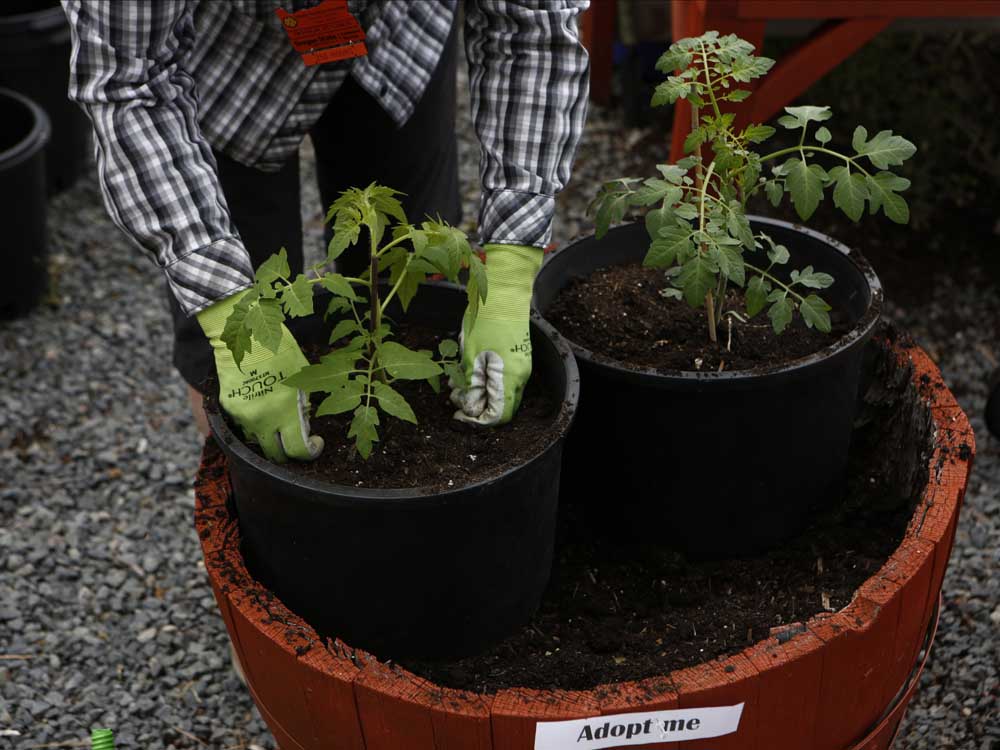Column: The dirt on container gardening
Published 2:50 pm Wednesday, February 26, 2020

- An Oregon State University Master Gardener in Bend demonstrates how to plant tomatoes in containers.
Edible gardening continues to be popular, holding steady with an average of 30 million households participating in vegetable gardening over the past five years, according to the National Gardening Association’s Gardening Survey. Container gardening has become one of the most popular and fastest gardening methods.
A vegetable garden doesn’t have to be the conventional in-ground garden plot. The vegetable garden can be a mixture of containers on a patio, deck, or balcony as long as the sun requirement of 6 hours a day for most vegetables is fulfilled.
When container planting became a new concept in gardening over 20 years ago, most gardeners used the various sizes of the black plastic nursery pots or the half wine barrels.
Now containers are artistic and available in a variety of materials including galvanized metal. Utilitarian fleece-like fabric gro-bags are successful and available in a variety of sizes. Vertical gardening is encouraged to make use of fences, railings and trellises.
Clay pots dry out easily, which makes them a perfect match for herbs that aren’t fussy. Thyme, oregano, sage and tarragon would be good choices.
Going back to the days when the method was new, many gardeners gave container gardening a thumbs -down. The thumbs -down came from gardeners being disappointed with the small yields of their favorite veggie that had been grown for years.
That’s when plant breeders realized there was a need to develop smaller varieties that would be prolific in a restricted growing environment. Heirloom varieties were brought back. Think about the original tomatoes — they certainly weren’t the size of the hybrid slicers available now.
Nursery catalogs and garden centers are now filed with varieties identified with attention -getting tags such as patio, baby, mini or container -suitable. Tomatoes, cucumbers, eggplant, mini roasting peppers, watermelons, cantaloupes, even 4-inch globes of cabbage have been developed for our continued fresh vegetable choices.
It is important to match your container’s depth to the plant’s expected root growth.
Deeply rooted vegetables, such as tomatoes and eggplant should be grown in pots 1 to 2 feet deep. We grew red robin tomatoes in hanging self-watering containers (they have a water reservoir built into the bottom).
Shallow rooted vegetables, such as lettuce, radishes, beets, onions can be grown in shallow containers.
If you like DIY projects, what do you have that could be recycled as a planter? Just be sure to drill drainage holes if the item doesn’t have any. Like woodworking? Make a trellis for cucumbers or beans.
Bagged potting soil is a must, not our native soil or topsoil you might see advertised. Central Oregon cannot take claim to any real topsoil. Anything you would find would be no better than what you have on your own property.
Reuse old potting soil if your plants weren’t diseased or insect-infected the previous year. Remove the top 6 inches and refresh with new potting soil.
Consider containers with casters or use caddies under your pots so you can move them more easily on hard, flat surfaces.
Containers need consistent watering, so make sure your water source is close for hand watering.
If your garden is an apartment balcony or patio, buy a colorful large watering container. Use the finger test to know when to water: If you can poke your finger into the soil and if it’s dry to the knuckle, water.
You will need to stay on top of fertilizing. I use a granular fertilizer when I transplant seedlings and again when I see production is starting.
Add a container or two of flowers to encourage pollination and add some color.
Now is the time to begin planning. Look for containers, make a list of favorite veggies and watch for spring specials at nurseries and garden centers.








